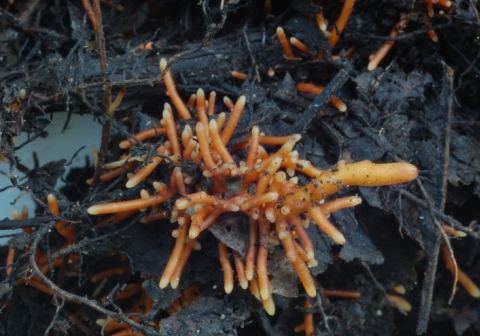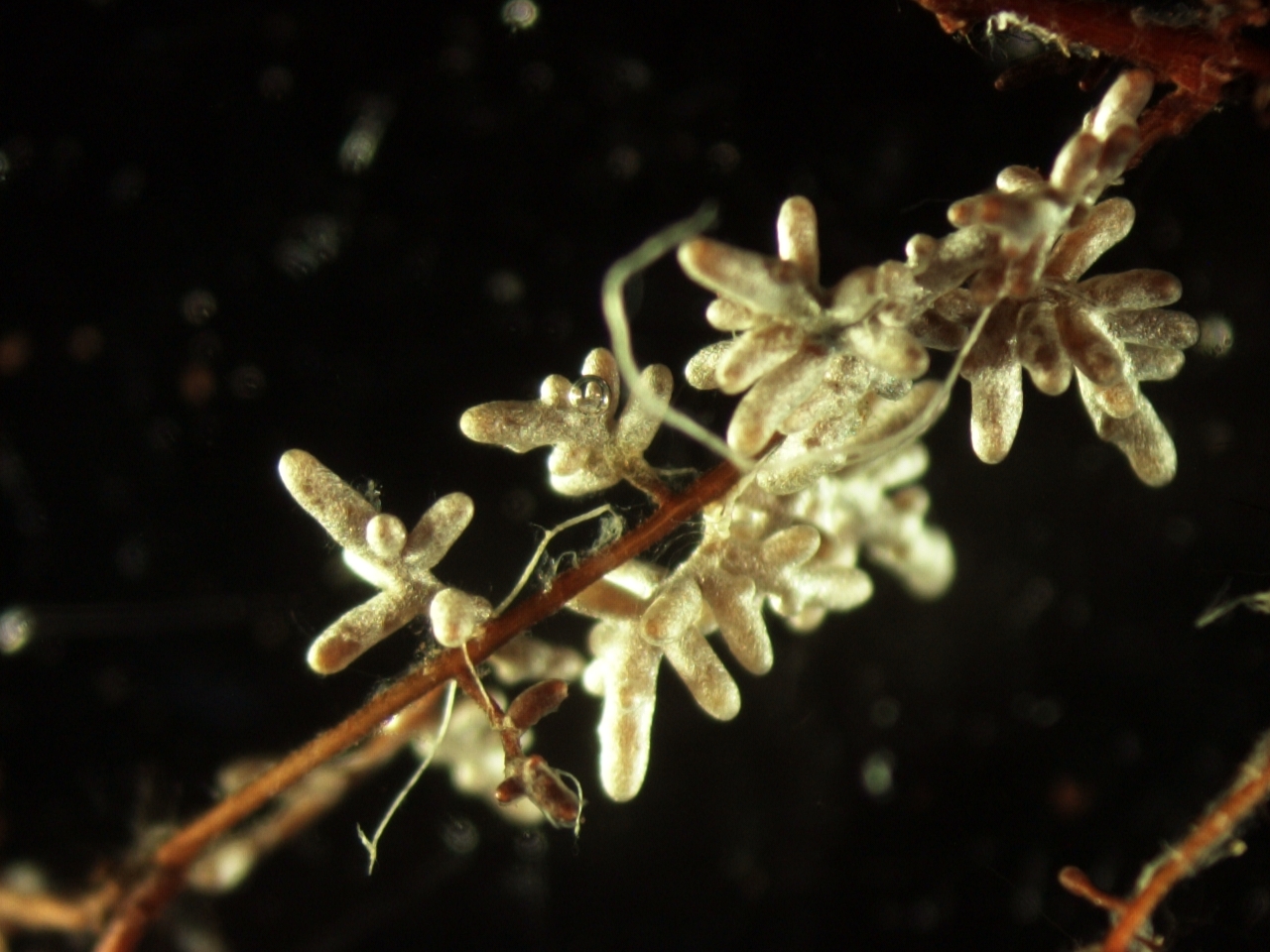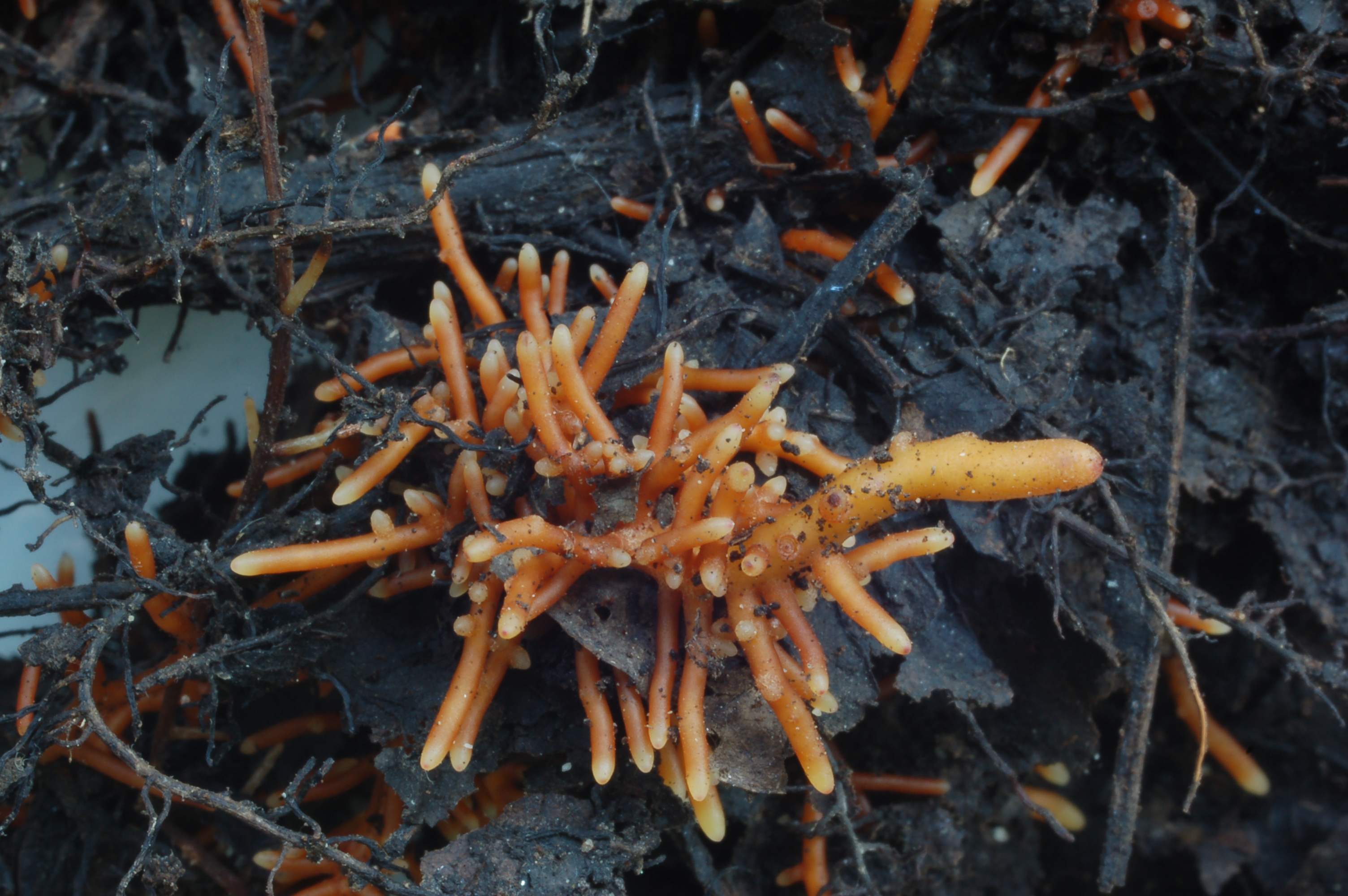The journal ‘Microbial Ecology' has recently published an article on the key role played by mycorrhizae in the establishing and functioning of terrestrial ecosystems. The co-author is Prof Estibaliz Sarrionandia-Areitio of the Botany Laboratory attached to the Department of Plant Biology and Ecology of the UPV/EHU-University of the Basque Country. The article is the outcome of the collaboration between research groups of the UPV/EHU and the National University of Cordoba in Argentina.
-

Azukrea eta edulkoratzaileak. Zer jakin behar dut?
-

Athletic zuri ta gorria, zu zara nagusia, baina zertan? Gizonezko futbol profesionalaren gaitasun (im)mobilizatzaileari buruzko hausnarketa soziologikoa
-

Unibertsitateko elikadura ingurune osasungarriago baten bila
-

Iñigo Ugedo Vicario: «Modu aktiboan parte hartuko dugu unibertsitateko aldaketa prozesuetan»
-

UPV/EHUko Gobernu Kontseiluak “Palestina laguntzeko manifestua Gazako hondamendi humanitarioaren aurrean” izeneko adierazpena onartu du
The importance of mycorrhizae
The work by the research groups of the UPV/EHU and the National University of Cordoba is pioneering on the Iberian Peninsula
- Report
First publication date: 17/06/2015

The journal ‘Microbial Ecology' has published the article entitled ‘Greenhouse seedlings of Alnus showed low host intrageneric specificity and a strong preference for some Tomentella ectomycorrhizal associates'. Its co-author is Estibaliz Sarrionandia-Areitio, a researcher in the Botany Laboratory attached to the UPV/EHU's Department of Plant Biology and Ecology, and it is the outcome of the collaboration between research groups of the Basque University and the National University of Cordoba in Argentina, led by Eduardo Nouhra. Specifically, the research focuses on the comparative studies of the mycorrhizal species associated with the vicariant species Alnus glutinosa and Alnus acuminata on the Iberian Peninsula and in Argentina, respectively.
As Prof Sarrionandia explained, "the planning of this project arose out of an initial contact between the mycology members of the National University of Cordoba and the UPV/EHU, which led to a visit to the Argentine university to set up the comparative study of the mycorrhizal structures of the Alnus (Betulaceae) species present in the two territories involved: A. glutinosa, common alder (Iberian Peninsula) and A. acuminata, evergreen alder (Argentina)". It should be pointed out that the two vicariant species form alder groves (riverbank woodlands) which, in the case of Europe, figure among habitats needing priority protection (Directive 92/43/EC) on account of their situation and recognised ecological value. What is more, they are the only species in their family present in Africa and the Southern Hemisphere, respectively.
The Alnus genus is made up of very interesting species from the biological, ecological and economic perspective in general, and the mycological perspective, in particular. "Alnus is one of the few plant genera capable of simultaneously establishing a tetrapartite association with actinobacteria of the Frankia genus and with fungi that establish different types of mycorrhizae (mutualistic symbiosis between plant roots and the hyphae of certain filamentous fungi): arbuscular mycorrhizae (AM) and ectomycorrhizae (ECM)," explained the UPV/EHU researcher. Via the mycorrhizae the fungi get from the plants the source of carbon they need to develop; and the plants, in turn, get via the fungi minerals, such as phosphorus and nitrogen in particular, plus water and pathogen resistance. This special feature makes these alder species highly tolerant towards environmental stress, such as swamps, wetlands, riparian zones and high mountain environments. What is more, the species of this genus are characterised by being pioneering, rapid growth ones, and adapted to a broad range of habitats, such as glacial deposits, dunes, volcanic soils with ash deposits, or landslides.
Lack of knowledge about mycorrhization
Mycorrhizae also play a key role in the establishing and functioning of terrestrial ecosystems and are partly responsible for the structure and dynamics of plant populations and communities. "Despite their importance, many aspects of mycorrhization remain unknown. AM fungi are the most widespread in the world (85% of terrestrial plants) and the most primitive ones (400 million years), and only the species in the Glomeromycota division participate in them. AM fungi also appear to have been decisive in the early colonisation of the terrestrial medium by plants," added the researcher. "By contrast, only 3% of spermatophytes (8,000 species) establish ECM fungi, but their ecological and economic impact is highly significant as it involves a large number of woody species dominant in many forest ecosystems". It seems that ever since they appeared about 50 million years ago, ECM fungi have evolved several times and in an independent way. What is more, the huge specificity that some fungal genera display towards the host seems to indicate that a true co-evolution process took part between certain plants and fungi.
Among its initial aims the research work set out to describe the AM and ECM fungal flora associated with Alnus glutinosa and Alnus acuminata, and to compare the mycota associated with the rhizosphere of riparian forests made up of A. glutinosa on the Iberian Peninsula, and A. acuminata in Argentina, and to analyse the specificity of the mycorrhizal species associated with both species of Alnus. "Ectomycorrhizal fungal flora associated with Alnus is very specific and not very diverse. This phenomenon is the one that enables the plant-fungus co-evolution processes to be analysed on the basis of the advantage of the existence of phylogenetic and bio-geographical works on Alnus. The mycorrhizal flora association with A. glutinosa has only been studied in Central Europe. This would be the first piece of work on the Peninsula which, owing to its geographical position between the Eurosiberian region and the Mediterranean, would enable the study to be extended to the so far unexplored Mediterranean environment. This would also be the first comparative piece of work on the mycorrhizae associated with these two species," highlighted Sarrionandia. Yet so far, and despite the effort, no funding has been forthcoming to carry out the project, but the insistence and interest of the members to conduct research into this subject has resulted in the publication.
Working teams
Each of the groups involved comprises people with broad experience in the study of mycorrhizal structures and with sufficient enthusiasm, dedication and capacity to come up with and execute projects of this type. "All the members of the group have participated either independently or in collaboration in a whole host of projects tackling a range of mycorrhization aspects. Work has been done to characterise the ectomycorrhizal fungal flora in various woodland ecosystems, in Argentina and on the Iberian Peninsula. They have also worked on projects to induce the mycorrhization of greenhouse woody plants for timber-based reforestation, and steps have been taken to induce mycorrhization in the field in woody plants used in the reforestation of derelict land."
The crisis is a phenomenon that has been affecting many countries and numerous sectors worldwide, and scientific research is one of them. So one of the measures that can be adopted to offset its consequences and achieve shared objectives is to join forces. "The UPV/EHU's mycology team is a small group made up of young, enthusiastic qualified lecturers and researchers and with the possibility of accessing cooperation-based calls. Its opposite number at the National University of Córdoba is a group that is not much bigger, but likewise made up of enthusiastic people ready to drive forward research but experiencing difficulties in securing funding," pointed out Prof Sarrionandia.
The basic studies to identify and recognise the species are essential for determining the benefits and applications that can be obtained from natural resources. Some Alnus species, like those covered in this work, are of great interest in forestry and ecological terms owing to their rapid growth and because they enhance soil quality and fertility particularly in plots of land that have been under human pressure. Mycorrhization is a widely used technique to improve the stabilisation and development of woodland plants in deforested areas. But not all fungal species offer the host plant the same benefits, nor are they that easy to manage. So expanding the knowledge about the fungal cortege offers the possibility of improving the mycorrhization of Alnus seedlings and optimising their application.
Bibliographical reference
Nouhra E.R., Pastor N., Becerra A., Sarrionandia Areitio E., Geml J. 2014. ‘Greenhouse seedlings of Alnus showed low host intrageneric specificity and a strong preference for some Tomentella ectomycorrhizal associates'. Microbial Ecology, DOI: 10.1007/s00248-014-0522-2.





